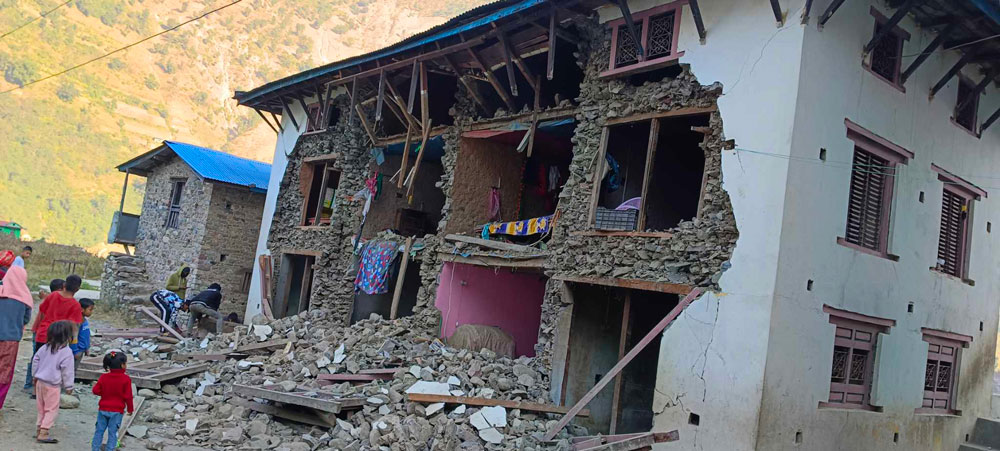A devastating earthquake of 6.4 Richter Scale struck the Jajarkot district late Friday night, causing widespread destruction. The epicentre of this earthquake was identified in Ramidanda, within the Barekot Rural Municipality-1. Jajarkot is a hilly district located approximately 310 miles west of Kathmandu, with a population of 190,000.
The earthquake’s impact was severe, resulting in the tragic loss of at least 157 lives and injuring approximately 480 individuals in the affected areas. The tremors were felt as far away as the capital, Kathmandu.
In response to this catastrophe, Nepal’s Right Honourable President, Ramchandra Paudel, has called upon all concerned and relevant parties to coordinate and expedite effective rescue and relief efforts in the affected regions. However, communication and access to remote areas near the epicentre, particularly in Ramidanda, were hampered due to landslides blocking roads.
The INF team has promptly engaged with the Karnali Province and District Disaster Response teams to assess the situation and coordinate relief efforts. Despite the challenges of limited connectivity and access in the region, the team is committed to gaining a clearer understanding of the damages and immediate needs.
INF has taken proactive measures by organising emergency planning meetings involving teams from Pokhara and Surkhet. INF has mobilised two staff from the Surkhet office to Jajarkot for initial assessment and district-level coordination. INF is also mobilising a team of medical personnel and others with immediate relief items, including food and non-food packages, to the earthquake-affected areas.
Considering the severity of the situation, INF anticipates both short-term relief and long-term reconstruction and rehabilitation efforts. The organisation seeks funding support from its partners to address the immediate and long-term needs of the affected communities.
Nepal, located along a major geological fault line where the Indian tectonic plate converges with the Eurasian plate, is susceptible to seismic activity. In 2015, the country endured a devastating earthquake that claimed the lives of around 9,000 people, causing extensive damage to towns, historical sites, and countless homes.
Photo credit: My Republica



